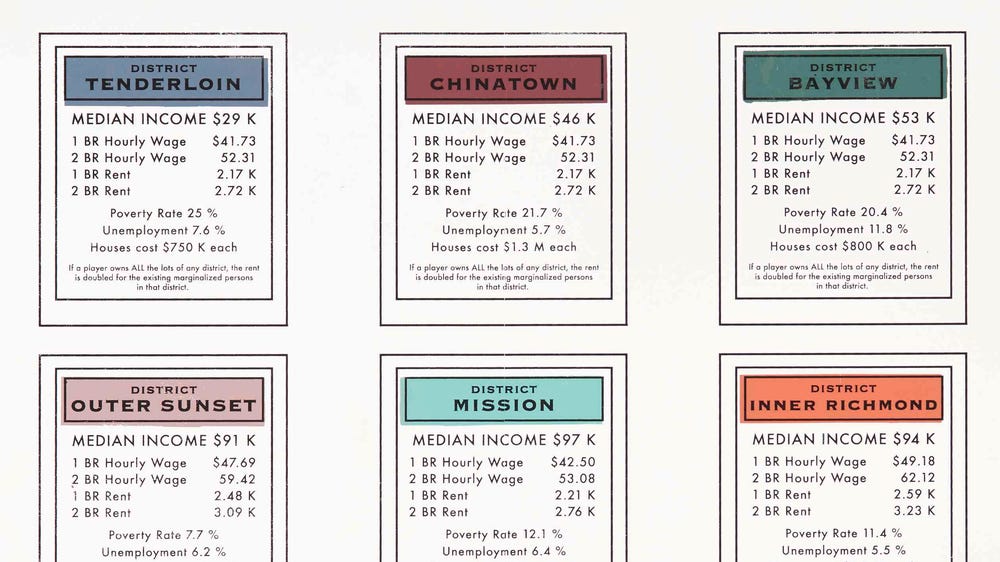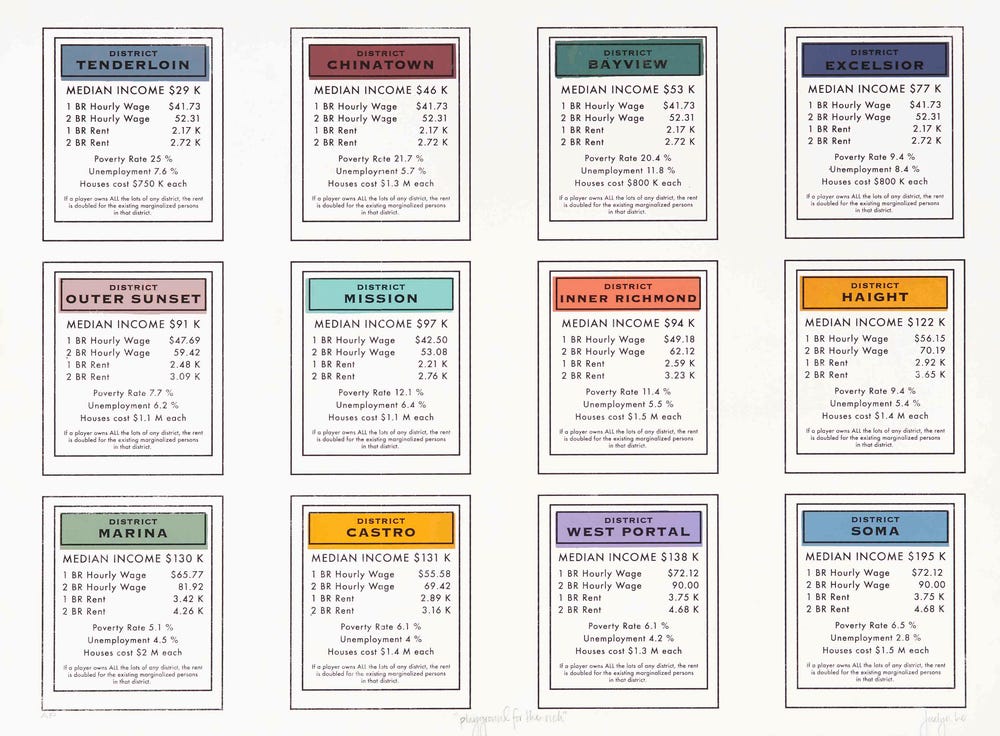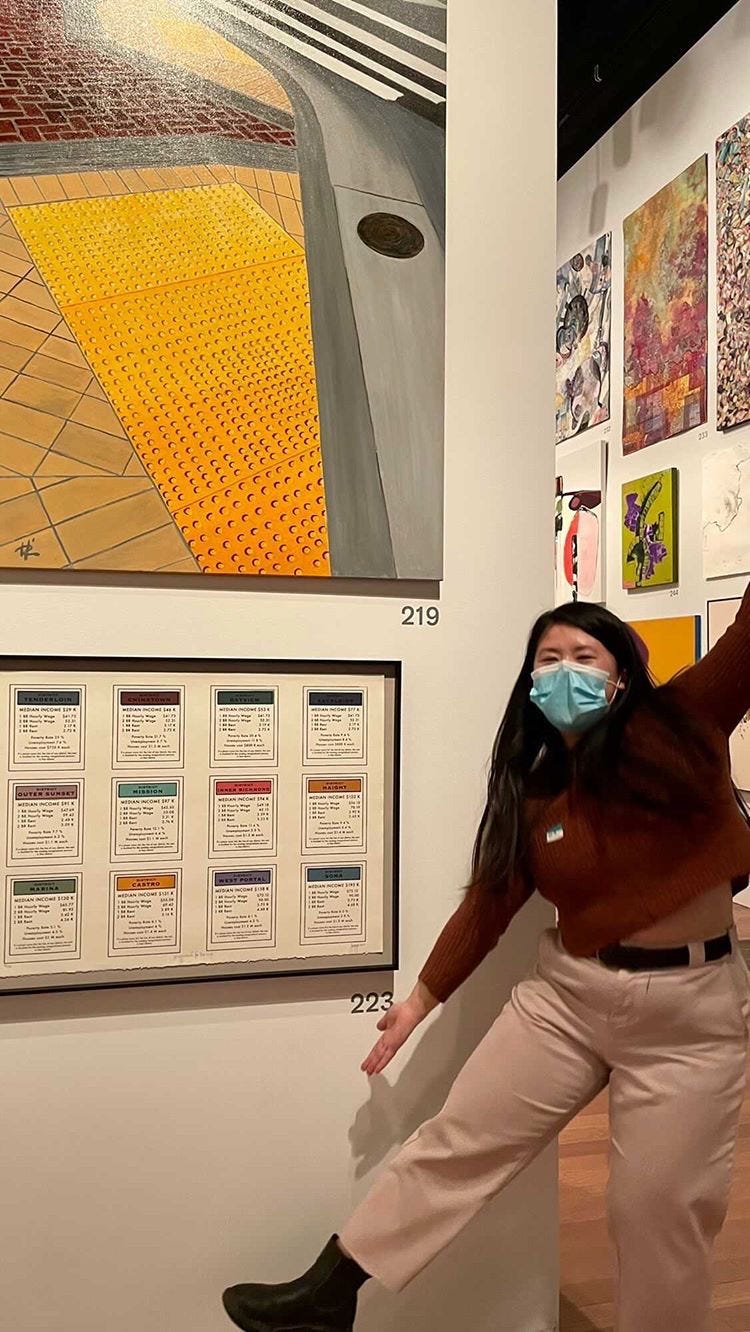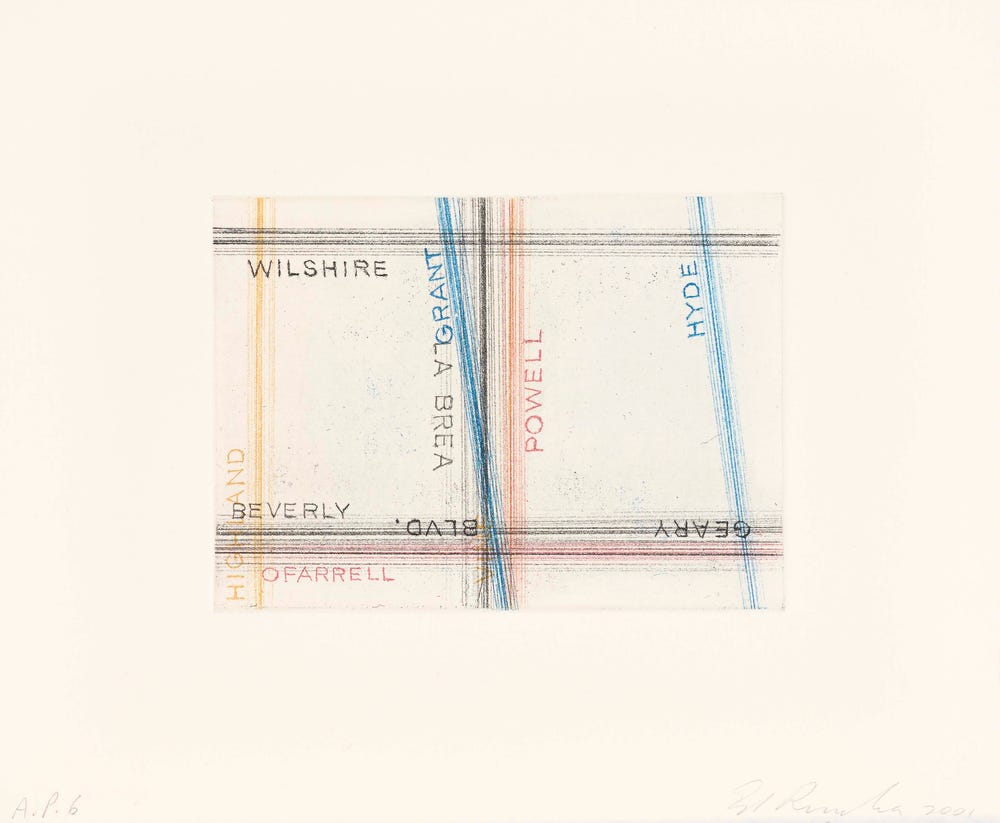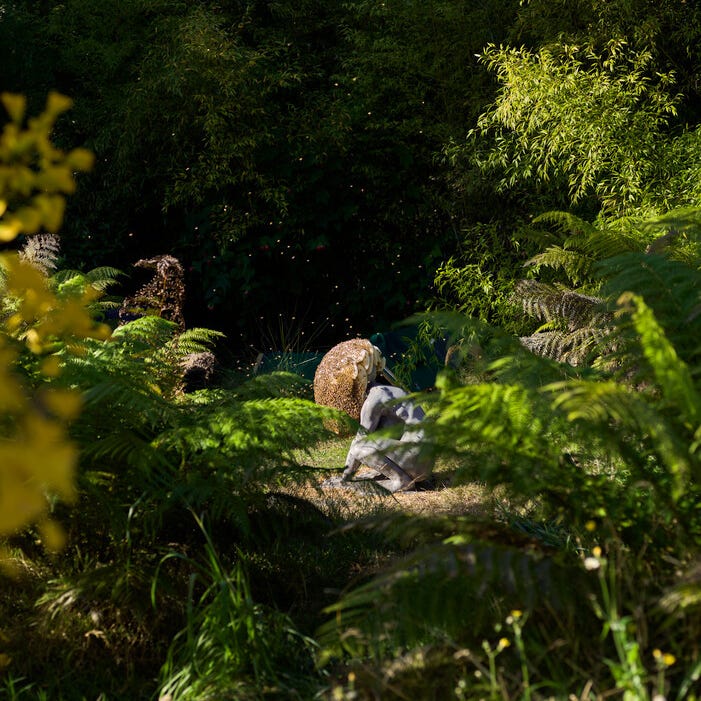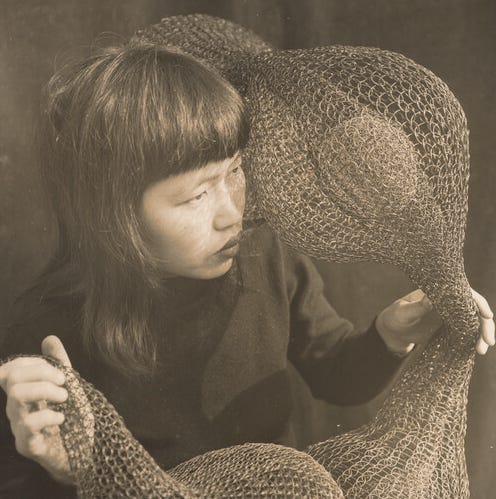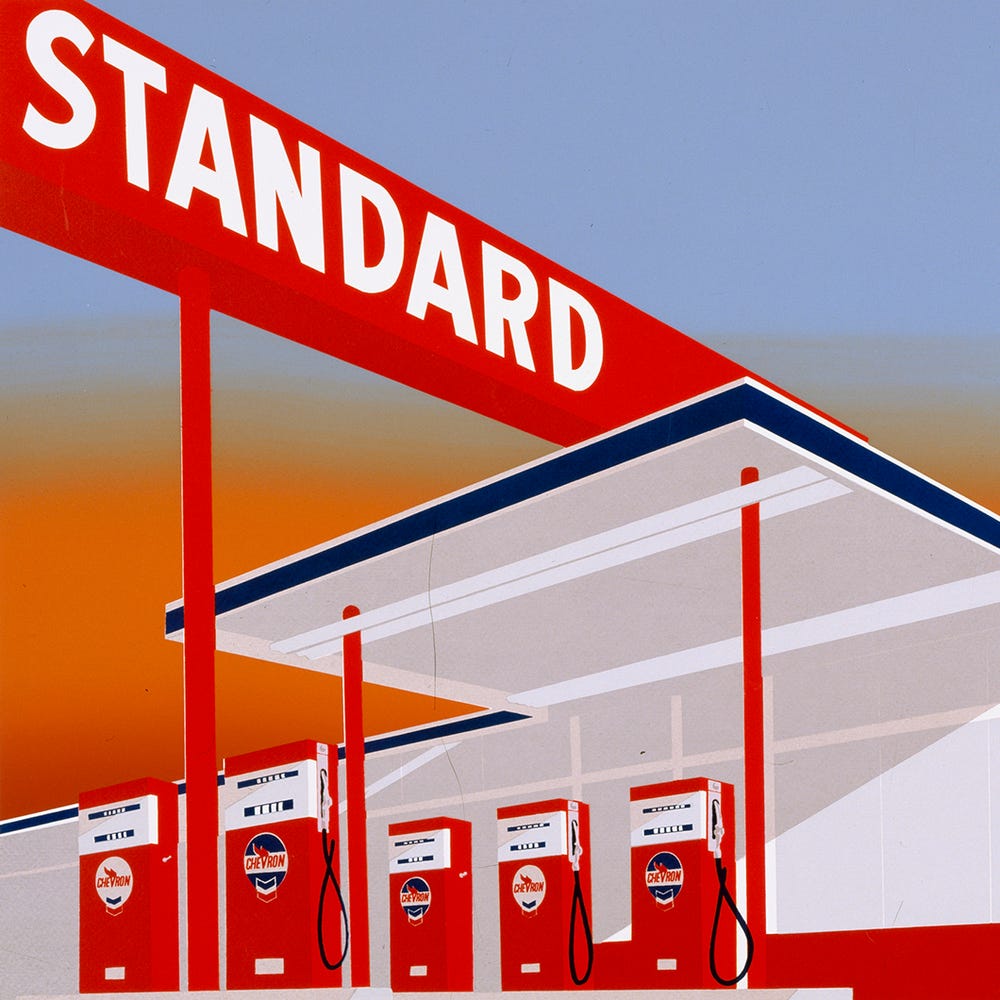Q+A: Bay Area Artist Jocelyn Lee
By Megan Bates, digital media producer, in conversation with artist Jocelyn Lee
August 31, 2023
Jocelyn Lee, Playground for the rich, 2019. Color screenprint, Frame: 610 x 813 mm (24 x 32 in.). Museum purchase, Achenbach Graphic Arts Council, 2020.45. Photograph by Jorge Bachmann
We sat down with artist and book binder Jocelyn Lee to talk about her work Playground for the rich (2019), which was featured in The de Young Open in 2020 and acquired for our collection. Here, she shares how she became an artist, her relationship to San Francisco, what she hopes the future of art looks like, and more.
Megan Bates: Can you tell us a little bit about your path to becoming a professional artist?
Jocelyn Lee: I became an artist during university. I took one art history course and loved it, and that turned into a 2D foundations class about graphic design and color theory. I loved that class so much that I had to take another. It came to a turning point to either commit to an art degree or walk away. I decided to try and make it work, and double majored in cognitive science and studio art.
I really hit my stride when I found the printmaking department. While printmaking can require weeks of plate preparation, I’ve always felt each hour of work was worth it. Having a strong community of people who were so passionate about their work was inspiring, and pushed me to reach further with my prints.
MB: Can you tell us about your relationship to San Francisco?
JL: I grew up in San Francisco. My parents are both from the city. I can’t imagine myself living anywhere else. My work often features what I love, hate, miss, and wish for the city.
MB: Have you seen San Francisco change over the course of your life? Can you describe what the neighborhoods used to be like and what they’re like now?
JL: There’s so much building development and condos and just property developments that I would never expect. Out in the Crocker-Amazon when I was growing up, there were definitely a lot of working-class Latine and Chinese families, and now the demographics are shifting. It’s interesting what businesses hold firm out there and what has totally been demolished and turned either into condos and luxury buildings or fancy grocery stores.
Jocelyn Lee, Playground for the rich, 2019. Color screenprint, Frame: 610 x 813 mm (24 x 32 in.). Museum purchase, Achenbach Graphic Arts Council, 2020.45. Photograph by Jorge Bachmann
MB: How did you come up with the idea for Playground for the rich?
JL: Playground for the rich was inspired by an article I read about how much you would have to make per hour to afford an apartment in each district. The numbers were just outrageous and hard to grapple with. I mean, starting in the Tenderloin, you would have to make $55 an hour to afford a one bedroom. I had all this data I was collecting about Chinatown and Mission Bay and the Mission.
I was collecting all this data, and I didn’t know what to do with it. I felt like the Monopoly title deed card was really right for stacking a lot of information.
MB: Can you tell us about your experience with The de Young Open?
JL: I was so excited when I got the email that I was accepted to The de Young Open.
I personally got a lot out of coming to the show dozens of times. Every time I entered that gallery, there was something new to look at and something new to discover. It was also really great seeing what my friends responded to, and what other museum guests were responding to.
Jocelyn and her artwork at The de Young Open
MB: Can you tell us how your work ended up in the museum’s collection?
JL: That was very surreal. Karin Breuer over at the Achenbach Foundation emailed me, and said that she would like to acquire the piece. I said, “Yes, absolutely.” It wasn’t even something I thought was possible, so for her to reach out and make the first connection was really special.
MB: What is your favorite piece of artwork at the de Young or Legion of Honor?
JL: My favorite collection of art can be found at the Legion of Honor. It’s Ed Ruscha’s Los Francisco San Angeles portfolio that he did in collaboration with Crown Point Press, locally here in San Francisco. It’s a really lovely portfolio of soft-ground etchings, and they have all these deceptively simple lines that are streets and famous locations in Los Angeles and San Francisco.
What I really appreciate about the Achenbach is the Ed Ruscha living archive. I mean, to have every proof that Ed Ruscha pulls from now into perpetuity is so special.
Edward Ruscha, Wilshire, Grant, plate 1 in the portfolio Los Francisco San Angeles, 2001. Color soft-ground etching printed from 5 plates on Arches Satine paper, Sheet: 207 x 245 mm (8 1/8 x 9 5/8 in.); Plate: 100 x 140 mm (3 15/16 x 5 1/2 in.). Crown Point Press Archive, Gift of Crown Point Press, 2001.136.12.1. © Edward Ruscha
MB: What advice would you give to aspiring artists?
JL: Get out there, do as much as you have at your disposal. I am all about getting on Instagram, getting on the Internet, finding out what’s going on locally, and connecting with other artists who are local to me. Grow your network. Most of the things I find out about, whether it’s art shows or openings or opportunities and open calls, it’s from word of mouth and being connected with other people. Specifically in the Bay Area, there are so many artist spaces and collectives and people who wanna be teaching workshops and connecting with other makers.
MB: What do you hope the art world looks like in the future?
JL: I’d like the art world to look more accessible. Whether that’s financially, socially, politically. I hope the art world is free of artificial intelligence. I find that to be worrying, to some degree.
I think there’s really beautiful and valid digital art that’s being made. It’s definitely a tool that can help us achieve. I am really interested in experimental printmaking, finding ways to use photo-based processes and computer digital processes to help aid in my very analog printmaking process.
But I think there’s a certain extent where AI really crosses the boundaries into copyright and ownership. I’m even a little hesitant to put my own art online these days just because there’s such a blurred line of what is a dataset for training AI models, and who owns artwork, and what’s fair play for those AI models.
This conversation has been edited for length and clarity.
